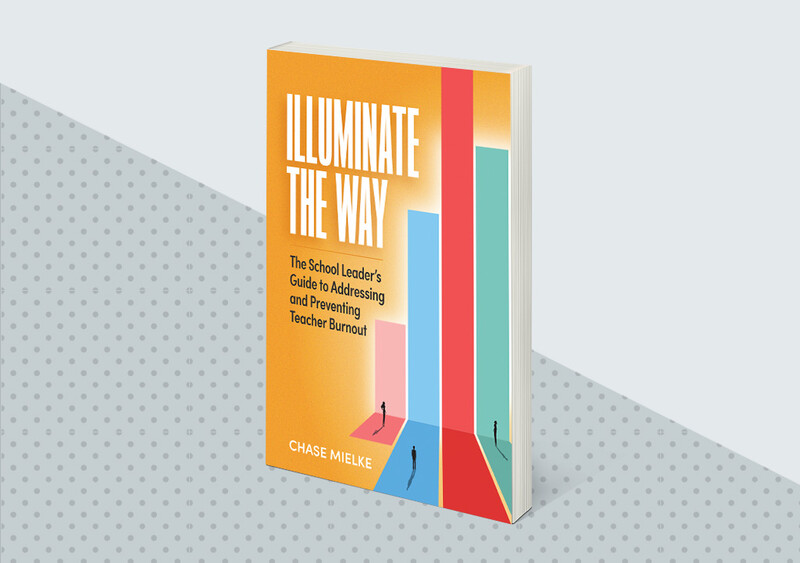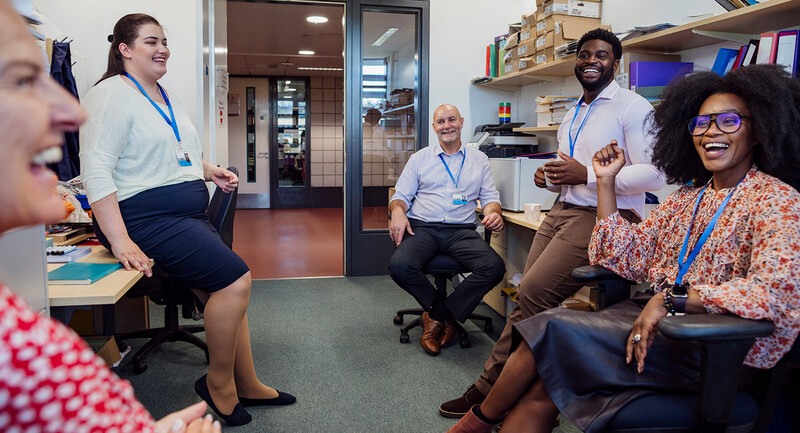Many of us face challenges with either a “glass half-full” or “glass half-empty” mentality—looking at the same objective reality through an optimistic or pessimistic lens. But in education, how we view the precise, half-measured glass doesn’t matter as much as how we view the spilled glass. The tipped glass of learning four new curricula in a year. The fallen glass of student behaviors that can’t be managed as well with our old skill sets. Even the spill of the Wi-Fi crashing, ruining that lesson we prepped all week. More than the optimistic mindsets we bring to the partially filled glasses, we need practical mindsets for the spills we see every day.
As I’ve traveled across the U.S. to work with thousands of educators this past year, I’ve seen how these spilled cups (representing major or even minor adversities) in schools are affecting morale. Some look at the myriad challenges with hopeless cynicism—emotional disengagement from work that can lead to learned helplessness: Society is doomed. Schools are doomed. So why bother? Others want to brush these adversities under the rug with a broom of toxic positivity. Stop dwelling on the bad. It could be worse. Just focus on the bright side. The former lacks hope. The latter lacks humanity.
Practical optimism can be both a habit we build in our own minds and a process we apply in our teams and organizations.
Instead, we need to honor when things are challenging—when the cup has smashed to the ground—while still exercising agency, the belief that our actions matter for cleaning up the mess. We need practical optimism.
Practical Optimism in Three Steps
The glass half-full perspective mirrors a concept called “dispositional optimism”—the tendency to view the world as more positive than negative. There are benefits of dispositional optimism, of looking for the good in life. But perhaps more helpful for educators during challenging times is to embrace what I call practical optimism: Honoring when things aren’t pleasant but identifying specific actions to make things better. Practical optimism can be both a habit we build in our own minds and a process we apply in our teams and organizations. Teaching and leading with practical optimism involves three steps: affirm, explore, and advance.
1. Affirm
Every emotion communicates a need. However, because unpleasant emotions are, well, unpleasant, we sometimes ignore their message. We may disregard our own emotions by downplaying them (I’m just overreacting) or distracting from them (I just need to get my mind off this feeling). More damaging is when we do this to others by disregarding their emotions by not listening fully, assuming we understand their needs, or trying to sugarcoat their experience.
To avoid toxic positivity, we must honor our unpleasant emotions. A simple first step is to give them as specific of a label as we can:
“I feel overwhelmed.”
“I feel disheartened.”
“I feel angry.”
Even if our initial label isn’t accurate or we have a cacophony of emotions, this step allows us to (1) accept that our lives are colored by feelings, even if they’re unpleasant, and (2) create a launch point to explore, not ignore, the causes of these unpleasant emotions.
2. Explore
With the emotion(s) affirmed, we dig deeper to understand the causes and effects of our discontent. Two ways to explore are to take time to reflect (in our minds, via writing, or talking with someone we trust) and to research emotions. One of my favorite resources for understanding emotions is the Atlas of Emotions, an interactive tool commissioned by the Dalai Lama. The Atlas of Emotions (not to be confused with Brené Brown’s Atlas of the Heart) is where I learned, for example, that rumination—which often arises for me when I’m angry—is actually a low-level fear response. As I ruminate about a lesson that confused my students, I understand more deeply that my impatience with my students was actually fear—fear that I wasn’t competent at crafting a clear lesson or fear that I lost credibility with my students. Exploring our emotions deepens our understanding of the “why” and “how” of adversity. Why did the adversity prompt this emotion? How is it impacting me and influencing my behavior? With these insights, we are more logically equipped to move forward to the next step.
3. Advance
At a recent professional development session I led for administrators and coaches, we discussed this question: What is the difference between negativity and cynicism? Our consensus: Cynicism is negativity without room for hope. We all have negative experiences that set us back, that frustrate us, that might even make us want to quit our jobs. We shouldn’t ignore these realities. But we also shouldn’t stew in negativity or mask our feelings with toxic positivity. Instead, we need to move from cynicism to practical optimism by orienting our thinking toward hope. Hope is rooted in desire, trust, and confidence. But the real power of hope lies in the actions it inspires.
The real power of hope lies in the actions it inspires.
After affirming and exploring our response to adversity, we must answer, What’s my next move? How can I use this experience to motivate my actions? My favorite prompts for this phase are:
What has helped me cope with or overcome similar challenges in the past?
What support will I need to move forward (and who could I turn to for this support)?
What action can I take in the next 24 hours to make progress on this issue?
Emotions communicate needs—not just so that we’ll pay attention to these needs, but so that we’ll act to fulfill them. Feeling overwhelmed by a workload is a signal to ask for support or learn new systems of work management. Feeling angry about a new board policy is a signal to advocate for change—or seek a different school or organization that aligns with our values. It is the advance phase, then, that most honors the purpose of our emotions.
Striking a (Productive) Balance
It’s naïve to assume all of life is rainbows and unicorns. And it’s nihilistic to assume all actions are ridiculous and useless. We have to acknowledge the many adversities that arise in our work by affirming and exploring our feelings around them. But we must use this affirmation and exploration to find ways to move forward. It doesn’t matter whether you feel the glass is half empty or half full, or whether you like or dislike that it smashed to the ground. What matters is what you do next. Affirm. Explore. Advance.
Illuminate the Way
A guide for school leaders to address and prevent teacher burnout.










